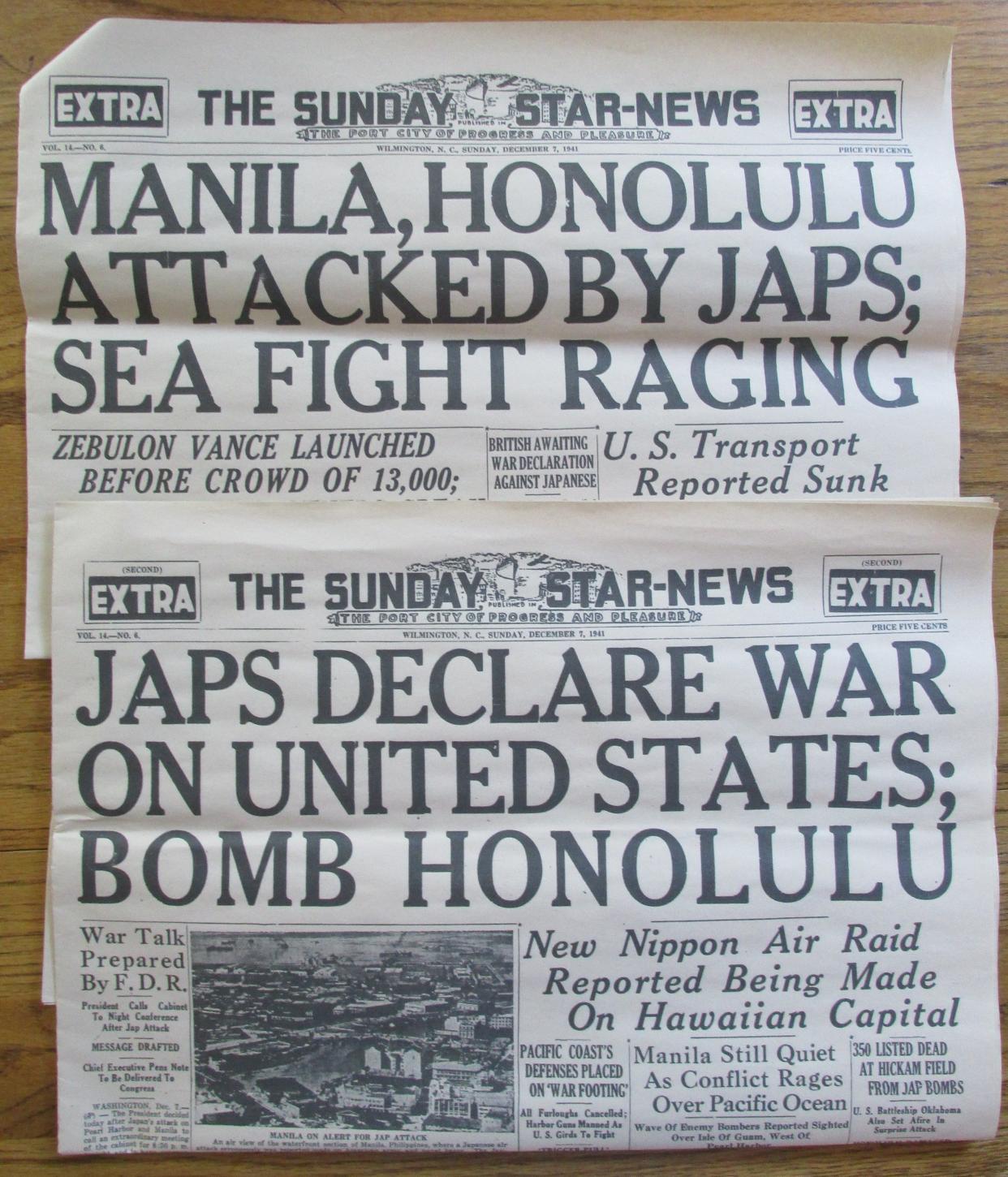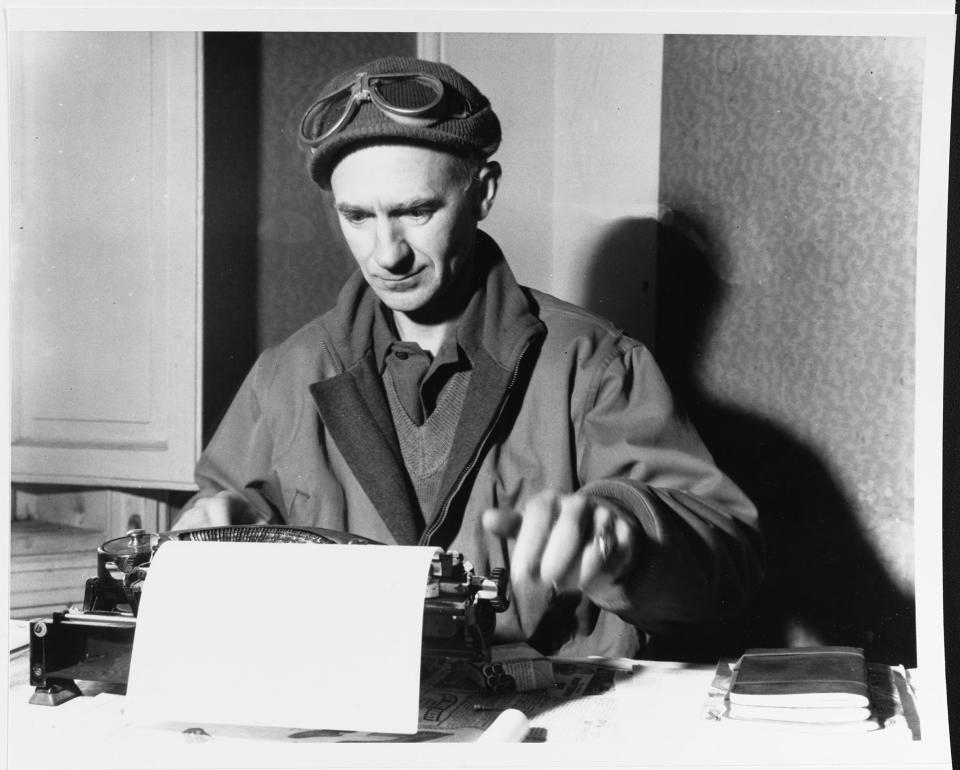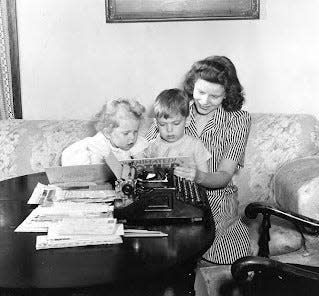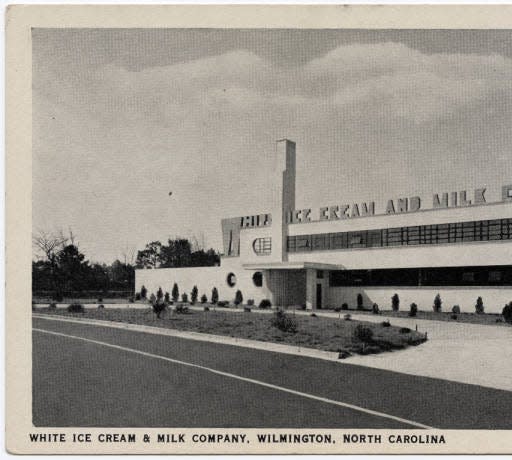Chronicling StarNews as Wilmington's eyes, ears and historian of World War II

In July 1942, following air raid alarms and blackouts, suspicious activity and cries to douse lights, with Army guards doubled everywhere in town, the StarNews declared: “It was the real thing. Wilmington was in danger. The war was at our doorsteps.”
At our doorsteps?
Yes, authorities told us, and be alert for German U-boats sinking ships out there somewhere. With Wilmington’s location, shipyard, military bases and war industries, we’d better believe it.
More: During World War II, here's how Wilmington leaned on the StarNews
So, this danger required off-channel — non-government propaganda — eyes and ears to inform us. Such became the World War II self-assumed responsibility of the StarNews. And thank goodness for that.
Editorials flowed from the civic-minded publisher, R. B. Page. They did their best with a small reporter staff. Much of their reporting was based on non-attributed information, speculations or single sources. Admonishments became an unofficial motto.
Causes and admonishments
As the area’s “voice of conscience,” also self assumed, the newspaper picked home front war-effort causes to bird-dog, while pushing civility, common sense and good order.
It liked challenging government agencies, questioning their why and when. It rightly targeted the federal OPA, the federal Office of Price Administration, for its sloppiness.
More: Here are 11 patriotic things about the Wilmington area
In mid-1943 the newspaper claimed the OPA had been in hot water from the start because of voluminous, threatening orders and dictating to the people to "do this" for the war.
"The American people do not take kindly to dictation but are open to conviction. They will cooperate in restrictions, once they are shown the need. Wilmington's experience with OPA meat investigations and other inquiries has destroyed public confidence in the bureau."
As for juvenile delinquency, the newspaper championed efforts to improve conditions. “The fundamental obligation to save children from delinquency rests with parents or guardians, but it has had little practical application...good theories.” Sentence the offending parents, it suggested.
By 1943, "Wilmington's traffic signal system has been synchronized. Now all that is needed is for drivers and pedestrians to obey the signals and for the latter to stop jaywalking." The newspaper hammered jaywalkers.
March 1944: “Can’t Wait for Peace” blasted the poor housing situation and “owners of ramshackles from responsibility to keep them in repair. In their present state of dilapidation at least 150 buildings [are] hovels no self-respecting farmer would use to house his hogs.” Don’t wait for postwar planning. Authorities built public housing, but lacked resources to overhaul all dwellings.

Advice
Advice, like admonishments freely given without opposition, ran the gamut from parish-priest consoling to boot-camp drill instructor lecturing.
December 1942: "Wilmington has not grown with its opportunity. Lack of vision has stood in its way since the city became a defense center," citing failure to accommodate young women arriving for jobs. "The time has come to wake up and recognize its obligation."
More: A view of history: What life was like at Forest Hills in Wilmington during World War II
Sermons regarding food shortages pummeled readers. Extract the maximum from foods. "Don't pour ration points down the drain." Dine out: "You can eat at restaurants within ration coupons. But restaurants will serve only about half as much canned and other processed foods." That is, go find a table. Hungry lines looped downtown street corners.
Rationing, food shortages, long lines, sabotage threats, transportation difficulties impacted all races. No one could expect immunity from laws or government dictates. Administering them could be another matter.
September 1942: “Black markets are a definite aid to the enemies of this country. If there are no customers, black markets will disappear. There is no reason to temper justice with mercy.” Regardless, this gig economy roared seemingly uncontrollable.
Shoes
Oh yes, the shoes advice. A February 1943 rationing order translated into: “Persons without ration cards whose shoes are about worn out may go barefoot unless they can persuade their local boards to issue them necessary credentials. The available stock will be more equitably distributed than any rationed article in the past.”
More: Remembering Bluethenthal Army Air Base: When the skies were filled with patrols, training
And, “Local women do not intend to be ‘caught without footwear’ as sales at stores indicate. One large store had 600 pairs of sandals last week which almost caused a stampede scattering shoes about the department and leaving many ‘mis-matches.’ Shortages have resulted in one underlying rule - that persons stand in line and take their turn.”
My family “qualified for” two pairs each annually. So, I wore my dress shoes to school, church, parties, bike riding, playing pickup football and in the foxhole war games. Didn’t matter. You wiped them clean with Bon Ami. You tried buffing the scuffing.
Sneakers? Rugged Converse Chuck Taylors. Only in white, one model, high tops, rubber soles. You forced your pair to last forever. (See today’s. Any changes?)
A wrapup. March 1943: “A rush to buys shoes before [ration] stamp No. 17 expired in June early resulted in a riot here. Wilmingtonians also caused confusion in stores by buying non-rationed shoes in April.”

Features
Ruth Millett’s syndicated society page columns uplifted morale with “how-to-cope” and “make-do” solutions, primarily for women. Of note: “Children’s War Questions Need Honest Answers.” We kids had plenty. As the “Ann Landers of the 40s and 50s,” she earned eternal gratitude for spurring us onward.
Other popular columns: “Glorify Yourself” and “War Kitchen for the housewife” advised conservation, saving and stretching. Use more deodorant. It saves clothes, which aids the war effort. Men should eat near their work station rather than using gas and tires to go home for lunch. (Yes, in the 1940s men did this.)
More: Sand, mosquitoes, and wind: Fort Fisher during World War II
The newspaper ran columns about nearby military bases, some written by servicemen. Bluethenthal Army Air Field’s “Wings Over Wilmington, With Air Base Boys” announced its “attempt to present the life of the soldier, his problems in Wilmington, and the news events which might be of interest to townspeople.”
In September 1942 columns about military personnel appeared. They ran throughout the war titled “Serving with Uncle Sam,” and “Our Men in Service.” In 1943 they added “and Women.” Items noted included duty assignments, home leave, decorations and honors and combat action seen — a good-news clearinghouse or bulletin board. The government, family and friends provided its information. Pages elsewhere reported casualties and prisoners of war.
My mother, the American Legion Post 10 historian, clipped these articles in maintaining the Post scrapbooks, later my valuable research sources.
Readers sought all kinds of information, such as “Weekly Rationing at a Glance.” It monitored commodities including sugar, gasoline, coffee, fuel oil, rubber, tires, scrap and government regulations and announcements.
Other features: “The Literary Guidepost”; “Daily Prayer”; “Thought for the Day”; “Civilian Defense Timetable”; and luminary war correspondent Ernie Pyle.
![A copy of the Sunday StarNews from Dec. 7, 1941 hangs on the wall during the Commemoration Pearl Harbor USO Dance by World War II Wilmington Home Front Heritage Coalition and the Hannah Block Historic USO/Community Arts Center in 2018. [KEN BLEVINS/STARNEWS]](https://s.yimg.com/ny/api/res/1.2/ji4iPvrjQP.E8g..fmWf2g--/YXBwaWQ9aGlnaGxhbmRlcjt3PTk2MDtoPTY0MA--/https://media.zenfs.com/en/star-news/efa108f7fe474d0c596b5f340adb20e1)
Unofficial historian
Once war started, the StarNews quickly morphed into the area’s unofficial war historian, providing the most reliable, valuable and in-depth record of our area’s war. Reliable at least depending on the sources.
But first, perhaps its most signal production came the day America entered the war, Sunday, December 7, 1941. Three editions! How could a small county (45,000 thereabouts), small-staffed daily print three editions just-like-that?
The entire regular edition, front page that morning highlighted the SS Zebulon B. Vance Liberty ship launching on the 6th, the first of 242 more from our shipyard. Then the wire bulletins arrived. The first extra edition, by mid afternoon, reported on the attack on Hawaii. Vance moved down the front page.
The second extra later on: more attack news. The Pacific is blowing up! Vance moved to page two.
My mother saved for me all three editions, now treasured among my wartime memorabilia.
For six months in the late 1990s I read every microfilm copy of the StarNews from December 1941 through 1946, recording what I needed. Besides for my books, this rich resource material provided substantiating data for the successful 12-1/2 year project earning Wilmington the first American World War II Heritage City.
Headlines announced the stories, often reflecting patriotic cheerleading, pep-rally organizing, or fear. This one, “1942 was a breathless year for Wilmington,” introduced the article. “Marked by firsts, but out-of-the-routine, growth, change, probably no year in history of the city could boasts 1942's scope, [and] reflects war in almost every phase of the city’s life.”
"Sacrifice, Conservation." - Anytime
"Alaskan Naval Base Twice Bombed by Japanese; Wilmington Boy at Dutch Harbor - 1942
"Wilmington said free from vice." - Nov. 1943
"Bomb Tokyo with Your Extra Change" - Anytime, war bonds
"Local POWs Well Fed But are Forced to Work." The text followed, “They either complete their assigned work or go to the guardhouse." - 1945
"Crime Wave Increases" - 1946, covering 1945

The war news
We tracked the war news developments through the newspaper’s war maps and written accounts. For every advertisement playing on America's heartstrings, or imploring increased involvement through financial or volunteer support, we read as many incidents of slackers and shirks, black marketeers and criminal acts.
July 1943: At the Information and Filter Center, "the regular summer let-down has come. As the summer advances the staff falls off. This would not be so bad if the war took a summer vacation and the danger of attack faded. Without this service an enemy attack could lay Wilmington waste and spread destruction throughout Southeastern North Carolina before defending planes could get off the ground."
By March 1943, physical disabilities caused rejection of 54 percent of the city’s draftees for service. This included 73 percent of Blacks and 36 percent of whites. Rejection “invites a question as to what is wrong with the physical training courses at our schools. The fault would seem to stem from failure sufficiently to encourage health-promoting habits.”
Advertisements endorsed a product’s impact on the war effort. In 1943 a Wilmington creamery echoed the national theme that its disappearing product had "gone to war." (Lucky Strike Green, anyone?). "White's Ice Cream Has Gone to War," it bannered. “It is our patriotic privilege and duty to help you understand the reason why we can no loner give you this rich ice cream." Bad news for kids needing sweet diversions from the news.
February 1944: When the first German prisoners of war arrived, the newspaper excelled describing camp arrangements and who comprised the POWs. More admonishment: "Sightseeing trips to the internment camps are apparently taboo,. Spectators will not be allowed to loiter about the camp." "There must be no communication with prisoners."
Wilmington social life rolled on, the war notwithstanding. Must-see reading jammed “society pages,” a.k.a. women’s pages. They bubbled with announcements of engagements, weddings, balls, ladies tea clubs, family visits, and train trips.
As the war concluded
The war’s end closed in.
January 1944: The Legion Post 10 bought the house at 3rd and Dock streets for its post home. "Legionnaires heartily agreed that boys returning home from the war should have a place where they can go and be among each other; a place where they are free to fight the war again," and mix with World War I oldtimers. Those included my Navy veteran father.
September 1945: "Thousands Accord Enthusiastic Welcome Home" to Wilmington's "No. 1 War Hero" — "the modest holder of the Congressional Medal of Honor....One of the biggest spontaneous receptions in the city's history." Captain Charles Murray, welcome home.
July 1945: "Soldiers returning to Wilmington with comforted hearts probably gave the city the years of their schooling and the early years of their commercial careers. They put their childhood, their adolescence, their young manhood, into Wilmington. Naturally they are happy to be home. It is in giving that truest satisfaction lies."
And, Camp Davis. With the July 1944 announcement the base would finally close, residents longed for a “return to things-as-they-were.” Editorial reaction, avoiding the inevitable, countered dolefully as if summarizing the city’s fate.
In one of its finest columns, whether consoling or convincing, the StarNews invoked reality as the natural course of events. The war’s favorable turn forecast the rapid waning of boomtown days. The people had better be ready.
“Wilmington must not, because the city is tired, drop its ambition for action, new industry, and fuller development.”
“But by and large,” the editorial warned, “it will be the imagination, the determination, and the unselfish ambitions of Wilmington citizens which will order the community to go ahead.”
Positive thinking surely, perhaps persuasive, but leaders balked once the shooting stopped.
The newspaper’s late 1945 evaluation determined "all indications are that Wilmington and Southeastern North Carolina had settled down from the ‘mining camp' hustle and bustle of the war days and survived the boom period." Citing the county's reluctance to "spend money to make money," the newspaper stated we were "still backward when it might be leading the state in improvements."
Had its influence also waned?
Wilmington native Wilbur Jones, a retired Navy captain, author and military historian, grew up here during the war. He organized and led the successful 12-1/2 year project earning Wilmington’s designation as the first American World War II Heritage City. See www.wilburjones.com.
This article originally appeared on Wilmington StarNews: How StarNews kept Wilmington informed during World War II

